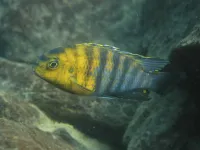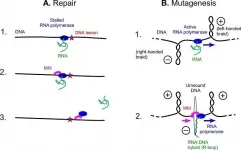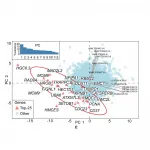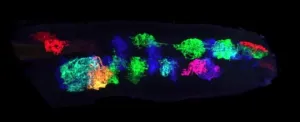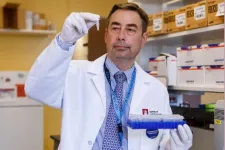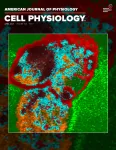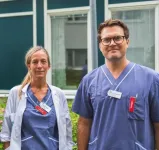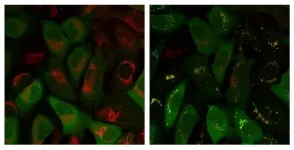How did 500 species of a fish form in a lake? Dramatically different body clocks
2021-04-08
Animals are remarkably diverse in their sleep and activity patterns due to foraging strategies, social behavior and their desire to avoid predators. With more than 3,000 types of cichlids, these freshwater fish may just be one of the most diverse species in the world. Lake Malawi alone, which stretches 350 miles through eastern Africa, is home to more than 500 cichlid species. They evolved from a few species that likely entered the lake about 3 million years ago and now display very different behaviors and inhabit well-defined niches throughout ...
Excellent outcomes reported for first targeted therapy for pediatric Hodgkin lymphoma
2021-04-08
Scientists are reporting results of the first frontline clinical trial to use targeted therapy to treat high-risk pediatric Hodgkin lymphoma. The study showed that the addition of brentuximab vedotin achieved excellent outcomes, reduced side effects, and allowed for reduced radiation exposures.
The study was the result of work by a multi-site consortium dedicated to pediatric Hodgkin-lymphoma. Collaborating institutions include St. Jude Children's Research Hospital, Stanford University School of Medicine, Dana-Farber Cancer Institute, Massachusetts General Hospital, Maine Children's Cancer Program and OSF Children's Hospital of Illinois.
A paper detailing the findings was published today in ...
A protein with a dual role: Both repair and mutation
2021-04-08
The Mfd protein repairs bacterial DNA, but can also, to scientists' surprise, promote mutation.
Bacterial mutations can lead to antibiotic resistance.
Understanding this second "role" of the Mfd protein opens up opportunities for combating antibiotic resistance, and also the resistance of tumours to anti-cancer drugs and therapies.
Using a specialized protein, all bacteria are capable of rapidly and effectively repairing damage to their DNA from UV. However, this mutation frequency decline (Mfd) protein plays another role and causes mutations. A team involving ...
Scientists at IRB Barcelona identify a potential target to treat lung cancer
2021-04-08
In cancer, personalised medicine takes advantage of the unique genetic changes in an individual tumour to find its vulnerabilities and fight it. Many tumours have a higher number of mutations due to a antiviral defence mechanism, the APOBEC system, which can accidentally damage DNA and cause mutations.
Researchers at IRB Barcelona led by Dr. Travis Stracker and Dr. Fran Supek have found the HMCES enzyme to be the Achilles heel of some lung tumours, specifically those with a higher number of mutations caused by the APOBEC system.
"We have discovered that blocking HMCES is very damaging to cells with an activated ...
Hispanic immigrants of working age at highest risk of dying from COVID-19
2021-04-08
Hispanic immigrants of working age -- 20 to 54 years old -- are over 11 times more likely to die of COVID-19 than U.S.-born men and women who are not Hispanic, according to a USC study of California death certificate data from 2020.
The study, published Monday in the END ...
Carbon dots from human hair boost solar cells
2021-04-08
QUT researchers have used carbon dots, created from human hair waste sourced from a Brisbane barbershop, to create a kind of "armour" to improve the performance of cutting-edge solar technology.
In a study published in the Journal of Materials Chemistry A, the researchers led by Professor Hongxia Wang in collaboration with Associate Professor Prashant Sonar of QUT's Centre for Materials Science showed the carbon nanodots could be used to improve the performance of perovskites solar cells.
Perovskites solar cells, a relatively new photovoltaic technology, are seen as the best PV candidate to deliver low-cost, highly efficient solar electricity in coming years. ...
Oregon researchers identify pathway that transitions brain from plasticity to stability
2021-04-08
EUGENE, Ore. -- April 8, 2021 -- Researchers exploring the developing central nervous system of fruit flies have identified nonelectrical cells that transition the brain from highly plastic into a less moldable, mature state.
The cells, known as astrocytes for their star-like shapes, and associated genes eventually could become therapeutic targets, said University of Oregon postdoctoral researcher Sarah Ackerman, who led the research.
"All of the cell types and signaling pathways I looked at are present in humans," Ackerman said. "Two of the genes that I ...
Third of Antarctic ice shelf area at risk of collapse as planet warms
2021-04-08
More than a third of the Antarctic's ice shelf area could be at risk of collapsing into the sea if global temperatures reach 4°C above pre-industrial levels, new research has shown.
The University of Reading led the most detailed ever study forecasting how vulnerable the vast floating platforms of ice surrounding Antarctica will become to dramatic collapse events caused by melting and runoff, as climate change forces temperatures to rise.
It found that 34% of the area of all Antarctic ice shelves - around half a million square kilometres - including 67% of ice shelf area on the Antarctic Peninsula, would be at risk of destabilisation under 4°C of warming. Limiting temperature ...
IU School of Medicine researchers develop blood test for depression, bipolar disorder
2021-04-08
INDIANAPOLIS--Worldwide, 1 in 4 people will suffer from a depressive episode in their lifetime.
While current diagnosis and treatment approaches are largely trial and error, a breakthrough study by Indiana University School of Medicine researchers sheds new light on the biological basis of mood disorders, and offers a promising blood test aimed at a precision medicine approach to treatment.
Led by Alexander B. Niculescu, MD, PhD, Professor of Psychiatry at IU School of Medicine, the study was published today in the high impact journal Molecular Psychiatry . The work builds on previous research conducted by Niculescu and his colleagues into blood biomarkers that track suicidality as well as pain, post-traumatic stress ...
Asteroid crater on Earth provides clues about Martian craters
2021-04-08
The almost 15-million-year-old Nördlinger Ries is an asteroid impact crater filled with lake sediments. Its structure is comparable to the craters currently being explored on Mars. In addition to various other deposits on the rim of the basin, the crater fill is mainly formed by stratified clay deposits. Unexpectedly, a research team led by the University of Göttingen has now discovered a volcanic ash layer in the asteroid crater. In addition, the team was able to show that the ground under the crater is sinking in the long term, which provides important ...
UofL biologists create better method to culture cells for testing drug toxicity
2021-04-08
LOUISVILLE, Ky. - When a new drug is being developed, the first question is, "Does it work?" The second question is, "Does it do harm?" No matter how effective a therapy is, if it harms the patient in the process, it has little value.
Doctoral student Robert Skolik and Associate Professor Michael Menze, Ph.D., in the Department of Biology at the University of Louisville, have found a way to make cell cultures respond more closely to normal cells, allowing drugs to be screened for toxicity earlier in the research timeline.
The vast majority of cells used for biomedical research are derived from cancer tissues stored in biorepositories. They are cheap to maintain, easy to grow and multiply quickly. Specifically, ...
Billboard and storefront ads for cannabis linked to problematic use in teens
2021-04-08
PISCATAWAY, NJ - Adolescents who frequently see billboard or storefront advertisements for recreational cannabis are more likely to use the drug weekly and to have symptoms of a cannabis use disorder, according to a new study in the Journal of Studies on Alcohol and Drugs.
Despite use being illegal for those below age 21 even in states that have approved recreational marijuana, "legalization may alter the ways that youth use cannabis," write the study authors, led by Pamela J. Trangenstein, Ph.D., M.P.H., of the University of North Carolina at Chapel Hill.
An increasing number of states have legalized or are considering legalizing recreational marijuana, and public concern over the risks of cannabis use has declined in recent ...
Gut bacteria "talk" to horse's cells to improve their athletic performance
2021-04-08
A horse's gut microbiome communicates with its host by sending chemical signals to its cells, which has the effect of helping the horse to extend its energy output, finds a new study published in Frontiers in Molecular Biosciences. This exciting discovery paves the way for dietary supplements that could enhance equine athletic performance.
"We are one of the first to demonstrate that certain types of equine gut bacteria produce chemical signals that communicate with the mitochondria in the horse's cells that regulate and generate energy," says Eric Barrey, author of this study and the Integrative Biology and Equine Genetics team leader at the National Research Institute for Agriculture, Food and Environment, France. "We believe that metabolites - small molecules created ...
Structural racism & anti-LGBTQ policies lead to worse health in Black sexual minority men
2021-04-08
Eliminating racist and anti-LGBTQ policies is essential to improving the health of Black gay, bisexual and other sexual minority men, according to a Rutgers-led research team.
The study, published in the American Journal of Preventive Medicine, examined the impact that U.S. state-level structural racism and anti-LGBTQ policies have on the psychological and behavioral health of Black and white sexual minority men.
"Our results illuminate the compounding effects of racist and anti-LGBTQ policies and their implementation for Black gay, bisexual, and queer men. To improve mental and physical health and support their human rights, these oppressive policies must be changed," said lead author Devin English, an assistant professor at Rutgers School of Public Health.
The researchers ...
All-in-one device uses microwave power for defense, medicine
2021-04-08
WEST LAFAYETTE, Ind. - An invention from Purdue University innovators may provide a new option to use directed energy for biomedical and defense applications.
The Purdue invention uses composite based nonlinear transmission lines (NLTLs) for a complete high-power microwave system, eliminating the need for multiple auxiliary systems. The interest in NLTLs has increased in the past few decades because they offer an effective solid-state alternative to conventional vacuum-based, high-power microwave generators that require large and expensive external systems, such as cryogenic electromagnets and high-voltage nanosecond pulse generators.
NLTLs have proven ...
The truth about doublespeak: Is it lying or just being persuasive?
2021-04-08
Doublespeak, or the use of euphemisms to sway opinion, lets leaders avoid the reputational costs of lying while still bringing people around to their way of thinking, a new study has found.
Researchers at the University of Waterloo found that the use of agreeable euphemistic terms biases people's evaluations of actions to be more favourable. For example, replacing a disagreeable term, "torture," with something more innocuous and semantically agreeable, like "enhanced interrogation."
"Like the much-studied phenomenon of 'fake news,' manipulative language can serve as a tool for misleading the public, doing so not with falsehoods but rather with the strategic use of euphemistic language," said Alexander Walker, lead author of the study and a PhD candidate in cognitive ...
New method advances single-cell transcriptomic technologies
2021-04-08
Single-cell transcriptomic methods allow scientists to study thousands of individual cells from living organisms, one-by-one, and sequence each cell's genetic material. Genes are activated differently in each cell type, giving rise to cell types such as neurons, skin cells and muscle cells.
Single-cell transcriptomics allows scientists to identify the genes that are active in each individual cell type, and discover how these genetic differences change cellular identity and function. Careful study of this data can allow new cell types to be discovered, ...
NIH-funded researchers develop language test for people with Down syndrome
2021-04-08
WHAT:
Researchers funded by the National Institutes of Health have developed a test to evaluate the expressive language skills of people with Down syndrome, a condition resulting from an extra copy or piece of chromosome 21. Expressive language is the use of words to convey meaning to others. Language delays are common in people with Down syndrome, and the study authors believe their test provides a more effective way to evaluate prospective language interventions, compared to current evaluation methods.
The study was conducted by Angela Thurman, Ph.D., of the University of California, Davis, and ...
A drug that can stop tumors from growing
2021-04-07
Cancer doctors may soon have a new tool for treating melanoma and other types of cancer, thanks to work being done by researchers at the University of Colorado Cancer Center.
In a paper published in the journal PNAS last month, CU Cancer Center members Mayumi Fujita, MD, PhD, Angelo D'Alessandro, PhD, Morkos Henen, PhD, MS, Beat Vogeli, PhD, Eric Pietras, PhD, James DeGregori, PhD, Carlo Marchetti, PhD, and Charles Dinarello, MD, along with Isak Tengesdal, MS, a graduate student in the Division of Infectious Diseases at the University of Colorado School of Medicine, detail their work on NLRP3, an intracellular complex that has been found to participate in melanoma-mediated inflammation, leading to tumor growth and progression. By ...
One of Africa's rarest primates protected by... speedbumps
2021-04-07
ZANZIBAR CITY (April 7, 2021) - A new study revealed that a drastic reduction of deaths of one of Africa's rarest primates, the Zanzibar red colobus (Piliocolobus kirkii), followed the installation of four speedbumps along a stretch of road where the species frequently crossed.
Zanzibar red colobus are found only in the Zanzibar archipelago and classified as Endangered by the IUCN Red List. Reliant on Unguja Island's forests for their survival, around half of the species population is found in Jozani-Chwaka Bay National Park.
In the study, published ...
One in ten have long-term effects 8 months following mild COVID-19
2021-04-07
Eight months after mild COVID-19, one in ten people still has at least one moderate to severe symptom that is perceived as having a negative impact on their work, social or home life. The most common long-term symptoms are a loss of smell and taste and fatigue. This is according to a study published in the journal JAMA, conducted by researchers at Danderyd Hospital and Karolinska Institutet in Sweden.
Since spring 2020, researchers at Danderyd Hospital and Karolinska Institutet have conducted the so-called COMMUNITY study, with the main purpose of examining immunity after COVID-19. In the first phase of the study in spring 2020, blood samples were collected from 2,149 employees at Danderyd Hospital, of whom about 19 percent had antibodies against SARS-CoV-2. Blood samples have since ...
Perinatal patients, nurses explain how hospital pandemic policies failed them
2021-04-07
With a lethal, airborne virus spreading fast, hospitals had to change how they treated patients and policies for how caregivers provided that treatment. But for maternity patients and nurses some of those changes had negative outcomes, according to a new University of Washington study.
"We found that visitor restrictions and separation policies were harming families and nurses. The effects for patients included loneliness, isolation and mistrust, while nurses described mistrust and low morale," said Molly Altman, lead author of the study and assistant professor in the UW School of Nursing.
Importantly, Altman added, both nurses and patients described how COVID "amplified existing ...
Parkinson's, cancer, type 2 diabetes share a key element that drives disease
2021-04-07
LA JOLLA--(April 7, 2021) When cells are stressed, chemical alarms go off, setting in motion a flurry of activity that protects the cell's most important players. During the rush, a protein called Parkin hurries to protect the mitochondria, the power stations that generate energy for the cell. Now Salk researchers have discovered a direct link between a master sensor of cell stress and Parkin itself. The same pathway is also tied to type 2 diabetes and cancer, which could open a new avenue for treating all three diseases.
"Our findings represent the earliest step in Parkin's alarm response that anyone's ever found by a long shot. ...
Johns Hopkins Medicine expert creates comprehensive guide to new diabetes drugs
2021-04-07
New medicines for people who have diabetes seem to pop up all the time. Drugs that help the body break down carbohydrates, drugs that increase excretion of glucose in the urine, drugs that help muscles respond to insulin and drugs that stimulate the pancreas to produce it -- the list of pharmaceutical options to treat diabetes gets longer and longer.
The downside of this wealth of treatment options is that it can be difficult for health care providers to stay on top of the latest research and standards of care. Which medication is best for which patients? And what are the best medicines to prescribe that both lower blood glucose and reduce risk for cardiovascular disease?
Johns Hopkins Medicine endocrinologist ...
Why lists of worldwide bird species disagree
2021-04-07
How many species of birds are there in the world? It depends on whose count you go by. The number could be as low as 10,000 or as high as 18,000. It's tough to standardize lists of species because the concept of a "species" itself is a little bit fuzzy.
That matters because conserving biodiversity requires knowing what diversity exists in the first place. So biologists, led by University of Utah doctoral candidate Monte Neate-Clegg of the School of Biological Sciences, set out to compare four main lists of bird species worldwide to find out how the lists differ--and why. They found that although the lists agree on most birds, disagreements in some regions ...
[1] ... [2311]
[2312]
[2313]
[2314]
[2315]
[2316]
[2317]
[2318]
2319
[2320]
[2321]
[2322]
[2323]
[2324]
[2325]
[2326]
[2327]
... [8686]
Press-News.org - Free Press Release Distribution service.
